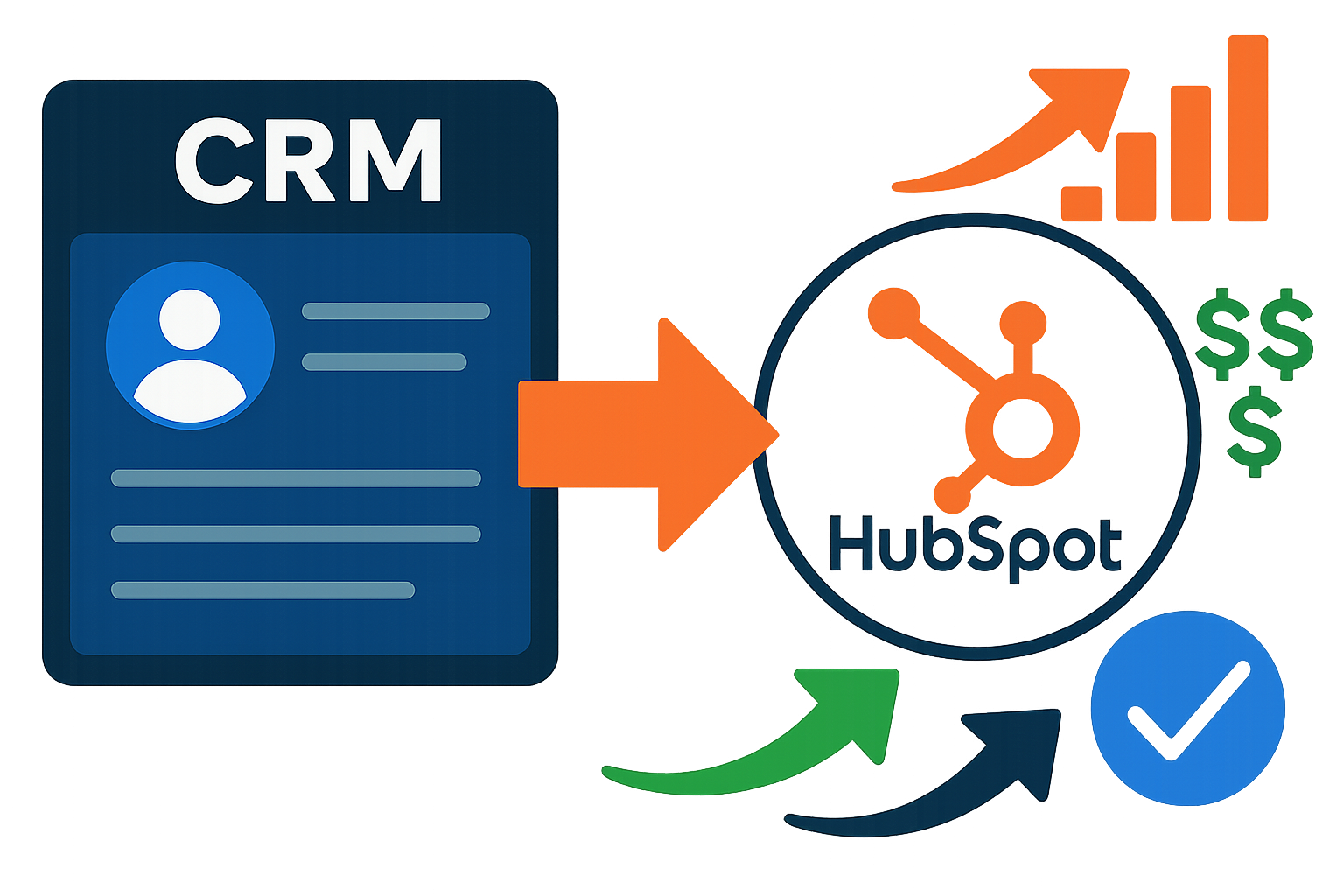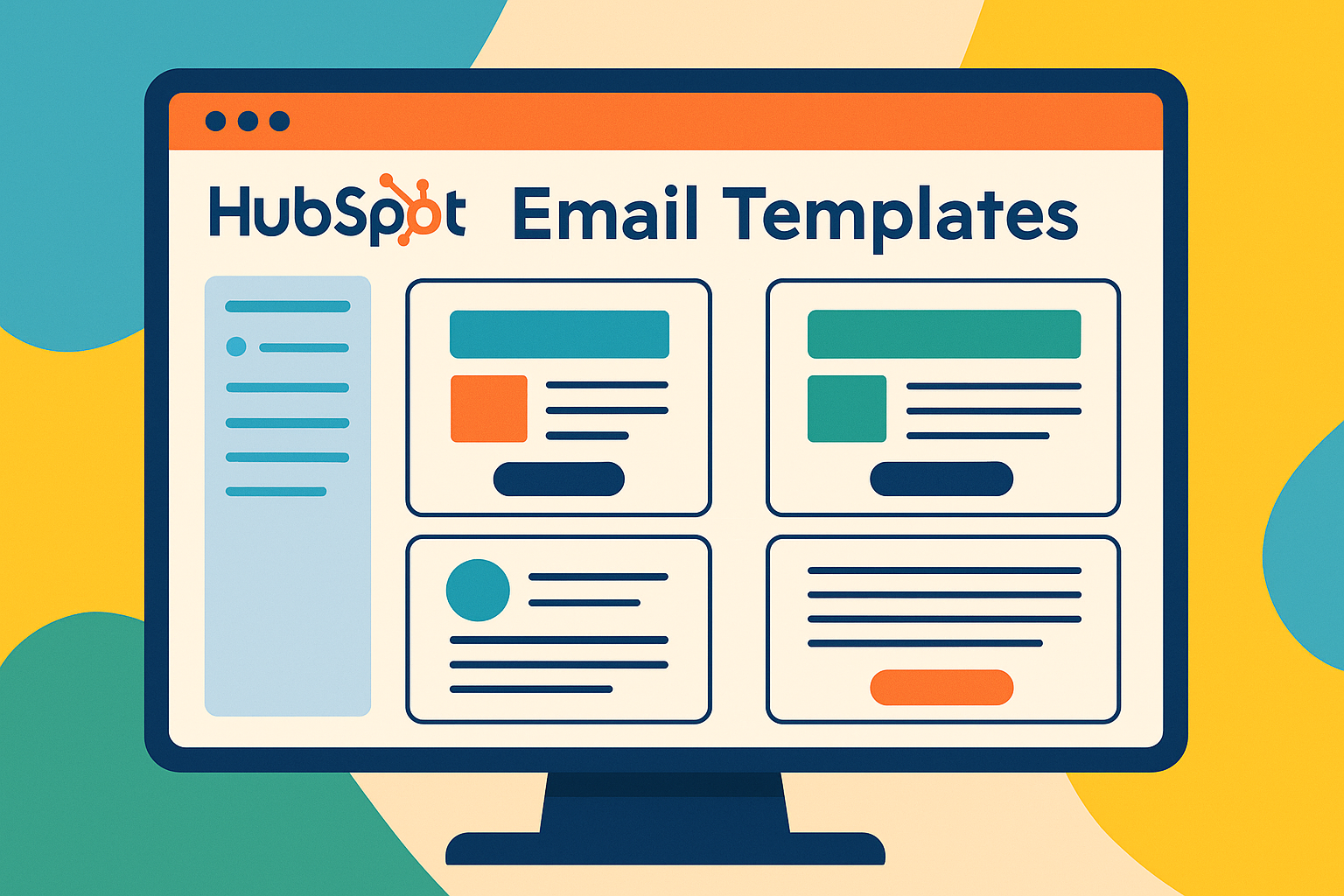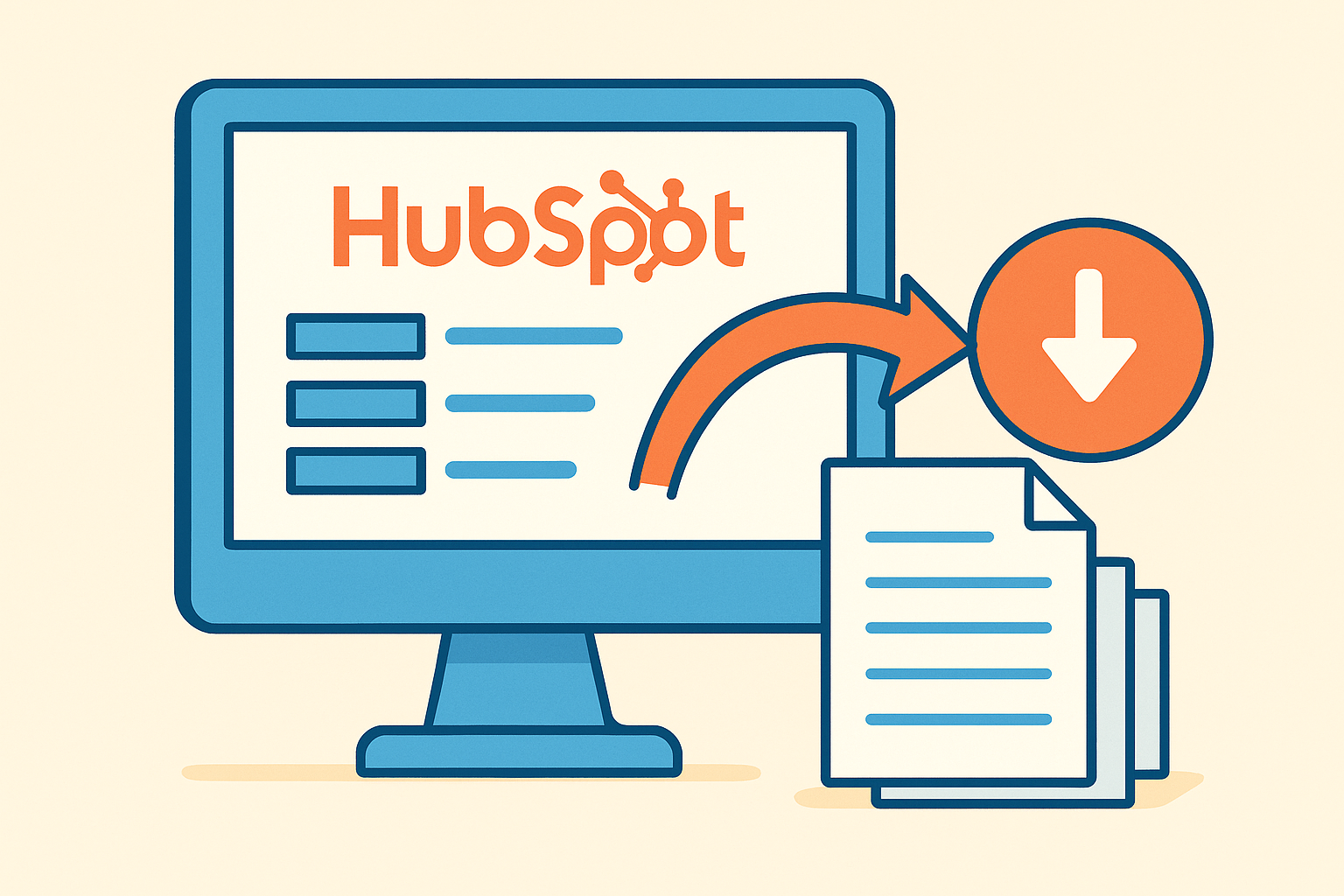If you've been wrestling with spreadsheets, juggling three different tools for sales and marketing, and your team keeps asking when you're finally going to get everything in one place, HubSpot migration might be the answer you're looking for. But before you dive in, let's talk about what it involves, what can go wrong, and how to do it right.
What is HubSpot Migration?
HubSpot migration is the process of moving your existing business data—contacts, deals, company records, email history, and more—from your current systems into HubSpot's platform.
Think of it like moving offices. You can't just grab everything and dump it in the new space. You need to organize, clean up, and figure out where everything goes. Same principle applies here.
The data usually comes from:
- Your old CRM (Salesforce, Pipedrive, etc.)
- Email marketing tools (Mailchimp, Constant Contact)
- Spreadsheets (yes, even that massive Excel file your sales manager refuses to give up)
- Marketing automation platforms
- Customer service tools
Pro Tip: much of this has to be manually recreated. Unlike simple data exports, your email templates and workflows don't just transfer over. Someone has to rebuild them piece by piece.
What are HubSpot Migration Services?
HubSpot migration services are professional services that handle this data transfer for you. Instead of your team spending months trying to figure out CSV imports and data mapping, you hire HubSpot Experts who've done this hundreds of times.
Most migration services include:
- Data audit and cleanup
- Migration planning and strategy
- Data transfer
- Testing and validation
- Post-migration support
Types of HubSpot Migration Services
- Basic Data Migration Your standard contact and company import. Usually includes basic deal data. This is what most small businesses need.
- Complex Multi-System Migration When you're pulling data from 4-5 different tools. Requires custom field mapping and data transformation. Expect this to take 2-4 weeks.
- Enterprise Migration Large data sets (100k+ contacts), complex workflows, and custom integrations. Often includes historical email data and detailed activity tracking. Plan for 1-3 months.
- Partial Migration Sometimes you only want to move specific data sets—like your top 1000 customers or deals from the last 18 months. Faster but requires careful planning to avoid gaps.
- HubSpot-to-HubSpot Migration Consolidating multiple HubSpot portals or splitting one into several. Sounds simple but carries unique challenges since you're recreating assets within the same platform.
How to Migrate Data To HubSpot?
You have four options, each with different risk profiles:
- DIY Migration: For some, this could be considered the hard way, as your team will handle everything internally. Industry data shows at least 60% of DIY migrations fail or require significant rework. The "cost savings" disappear when you factor in 200-400 hours of internal time and the eventual need to hire experts to fix the problems.
- HubSpot's Direct Service: HubSpot offers basic migration for simple transfers. Works for straightforward CRM moves but doesn't handle custom workflows, reports, or complex integrations.
- Certified Partner: Third-party agencies that specialize in complex migrations. Will require a dedicated investment but will handle data restructuring and custom development and provide training and support. Because it's time-efficient, this is considered the smart way for most leaders.
- Freelance Consultant: Middle ground between DIY and full agency. Good for specific tasks but may lack capacity for large, multi-department projects.
Steps Involved in HubSpot Migration
Here's what happens when you hire migration experts:
Step 1: Discovery and Planning (Week 1)
- Audit your current data sources
- Identify what needs to be migrated
- Map out custom fields and properties
- Set timeline and expectations
Step 2: Data Preparation (Week 1-2)
- Extract data from source systems
- Clean duplicate records
- Standardize formats
- Create backup files
Step 3: HubSpot Setup (Week 2)
- Configure your HubSpot portal
- Set up custom properties
- Create deal pipelines
- Configure user permissions
Step 4: Data Import (Week 2-3)
- Import contacts and companies first
- Add deals and opportunities
- Import email history (if applicable)
- Set up automation workflows
Step 5: Testing and Validation (Week 3)
- Verify data accuracy
- Test workflows and automations
- Check integrations
- User acceptance testing
Step 6: Go-Live and Support (Week 4)
- Final data sync
- Team training
- Monitor for issues
- Ongoing support period
Benefits of HubSpot Migrations
Let's skip the marketing speak and talk real benefits:
- You'll save about 10 hours per week once everything's centralized. No more switching between tools or manual data entry.
- Your team will actively use the CRM. HubSpot is intuitive enough that even your most tech-resistant reps will adopt it.
- Better reporting for better decisions. You'll finally see which marketing channels actually drive revenue, not just leads.
- Your data will be cleaner. Migration forces you to deal with duplicates and outdated records you've been ignoring.
- Scaling becomes easier. Adding new team members or expanding to new markets doesn't require multiple tool licenses.
Migration Costs and ROI
Direct Costs
- Migration service: $3,000-$50,000 depending on complexity
- HubSpot licensing: Usage-based, scales with contact database size
- Internal time: Even with professional help, expect 40-80 hours of internal work
Hidden Costs
- Opportunity cost of internal resources
- Cost of failed DIY attempts (happens 60% of the time)
- Delayed productivity gains from putting off the migration
Expected ROI
Organizations typically see 500-1,500% ROI in the first year through:
- 15-20% reduction in sales cycle time
- 30+ minutes daily time savings per user
- 90%+ user adoption rates
- Significantly improved data quality
Best Practices for HubSpot Migration
Here's what we've learned from watching dozens of migrations:
Before You Start
- Audit your data first. Delete obvious duplicates and outdated records before migration
- Define success metrics. How will you know the migration worked?
- Set realistic timelines. Add 50% buffer time to whatever estimate you get
- Get buy-in from your team. Migration affects everyone, not just IT
During Migration
- Start with a subset. Test with 100 contacts before importing 10,000
- Keep your old system running. Don't shut anything down until you're 100% confident
- Document everything. You'll need this for training and troubleshooting
- Test workflows thoroughly. A broken automation can mess up weeks of work
After Migration
- Monitor data quality. Check for import errors or missing information
- Train users gradually. Don't dump everyone into HubSpot on day one
- Have a rollback plan. Know how to revert if something goes seriously wrong
- Schedule regular data audits. Migration is just the beginning
Common Problems and How to Avoid Them
- Poor data quality: The biggest killer.
- Solution: Make data cleanup your top priority before starting.
- Team resistance: People hate change.
- Solution: Involve key users in planning and provide comprehensive training.
- Broken integrations: Third-party tools stop working.
- Solution: Test all integrations thoroughly before going live.
- SEO penalties: Website URLs change, and traffic drops.
- Solution: Map all URLs and set up 301 redirects.
- Solution: Map all URLs and set up 301 redirects.
Frequently Asked Questions
How long does HubSpot migration take?
Basic migrations: 1-2 weeks. Complex migrations: 4-8 weeks. Enterprise migrations: 2-3 months. Add time if you're migrating during busy periods or have messy data.
How much does HubSpot migration cost?
DIY: Just your team's time (40-80 hours). Professional services: $3,000-$15,000 for small businesses, $15,000-$50,000 for enterprises. Depends on data complexity and volume.
Will I lose data during migration?
Not if it's done right. Professional migration services include data validation and backup procedures. DIY migrations have a higher risk of data loss.
Can I migrate from any CRM to HubSpot?
Most major CRMs export data in standard formats. Salesforce, Pipedrive, Zoho, and others have established migration paths. Custom or legacy systems may require additional work. Check how OTF migrated 88000+ Records from Sugar CRM to HubSpot.
What if my team resists the change?
Common problem. Plan for training and have champions in each department. The key is showing quick wins—reports that were impossible before, automation that saves time.
Should I clean my data before or during migration?
Both. Do obvious cleanup before (delete test contacts, merge obvious duplicates). Professional migration services handle deeper cleaning during the process.
Can I migrate email history?
Depends on your source system. Email marketing platforms usually export campaign history. CRM email logs are trickier and may require custom work.
Key Takeaways
- HubSpot migration is worth doing if you're currently using multiple tools or spreadsheets for sales and marketing
- Professional migration services typically cost $3,000-$50,000 but save significant time and reduce risk
- Plan for 1-8 weeks depending on data complexity and volume
- Clean your data first to avoid importing garbage into your new system
- Keep your old system running until you're confident everything transferred correctly
- Budget extra time for training your team on the new platform
The bottom line: Migration is complex but worthwhile if you're currently managing multiple systems. Do it right the first time by investing in proper planning, data cleanup, and either professional services or significant internal resources.



